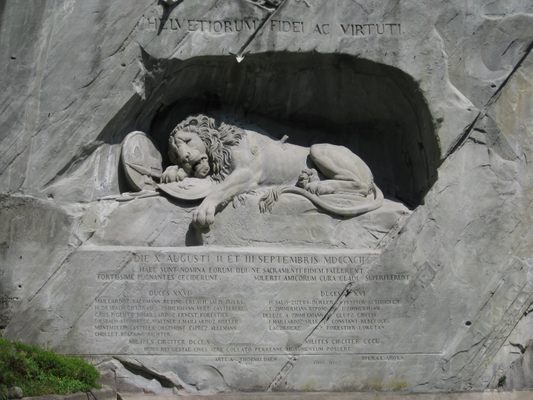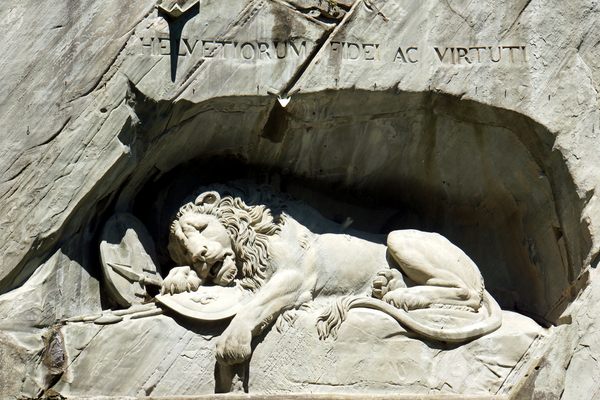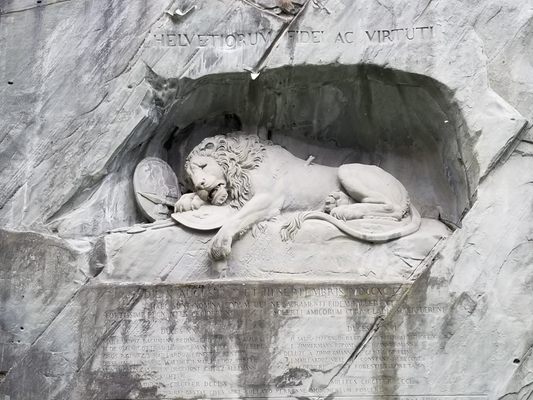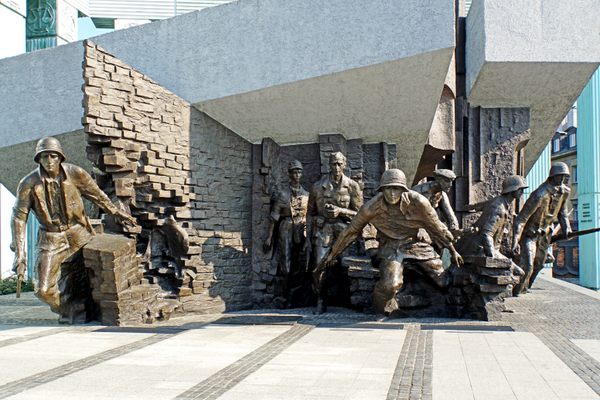About
Created to remember the hundreds of Swiss Guards who were massacred during the French Revolution, the Lion of Lucerne was emotionally evocative enough to garner the attention of none other than Mark Twain.
Carved directly into the wall of a former sandstone quarry in Lucerne, the titular lion statue sees the regal beast dying from a spear wound which is marked by a shield bearing the mark of the French monarchy. The remarkably large monument was etched from the stone in 1820 and measures a remarkable ten meters in length and six meters in height. Above the mournful lion is the inscription, "HELVETIORUM FIDEI AC VIRTUTI," which is Latin for "To the loyalty and bravery of the Swiss," and below the lion's niche is a list of some of the deceased officers' names.
In his 1880 travelogue, A Tramp Abroad, American author and noted satirist Mark Twain described the monument as "the most mournful and moving piece of stone in the world." The lifeless eyes of the Lion of Lucerne may not be able to cry, but the endless tragedy in its gaze still inspires more than its share of tears.
Related Tags
Community Contributors
Added By
Published
December 5, 2013




































